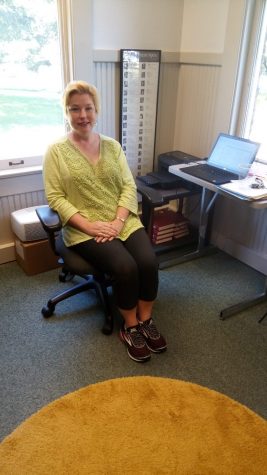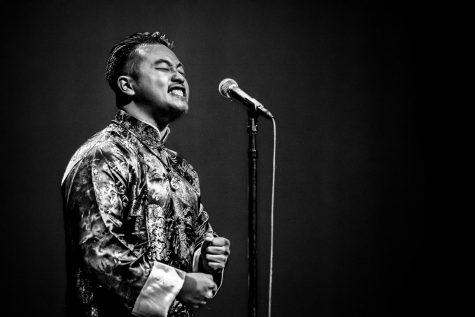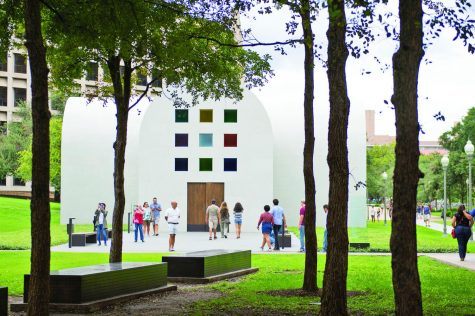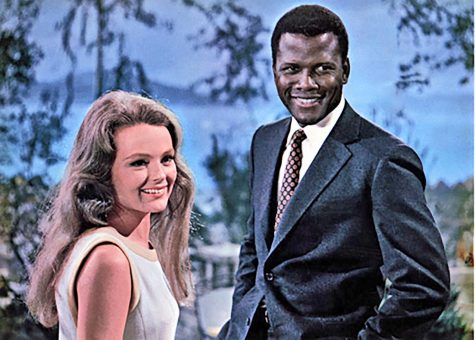Folkloric festival celebrates the dead and the living
As the crowd spilled onto South Congress and lined the curbs, the cheering and chanting began as MexicArte Museum’s 27th annual Viva la Vida Fest procession started.
At the front of the festival, which took place this year on Oct. 23, was a large banner reading Viva la Vida Fest, with young girls pretending to sell flowers and caramel apples.
“Flores! Flores!” they yelled.
Traditional Mexican matachines danced along to the beat of their drums, and folclorico dancers twirled their brightly colored dresses down the street.
Youth groups wore red T-shirts and zombie-like makeup to dance to Michael Jackson’s “Thriller,” and proud owners of classic lowriders cruised down the street throwing candy and blasting Mexican cumbias and rancheritas from the radio.
Among the lowriders sat Rep. Lloyd Doggett, D-Austin, and his wife as they rode on a blue convertible, tossing candy to the crowd.
Individuals in the parade carried pictures and names of their deceased loved ones, a reminder of why the celebration took place.
Dia de los Muertos, the day of the dead, is a traditional Mexican festival that takes place annually on Nov. 2. The day is a celebration of the lives of deceased loved ones. Families go to their loved ones’ graves and decorate headstones with the deceased’s favorite food, objects and other commemorations.
As the parade made its way into the festival, the procession broke up. However, that did not deter the celebration.
Inside the festival was a myriad of bright makeshift yellow and orange gravesites, complete with paper mache skeletons and giant Frida Kahlo replicas.
Many passerby managed to stop and take photos with the large skeletons.
A small block of 5th Street was dotted with tents containing everything from tamales to Pan de Muerto, traditional Mexican sweet bread. Under the largest tent was the children’s activity area, where kids can make plaster skulls and color stencils.
Also inside this tent was a shrine-like collection of ribbons and flowers with the names of the deceased. The shrine was surrounded with pieces of Pan de Muerto.
Not far from the activity area was a face-painting station, where the young and ancient alike got skeleton-white paint and black accents painted on their faces.
Vendors took up most of the other tents and sold everything from sugar skulls to reversible aprons with dancing skeletons on them.
Attendees were dressed to the nines. There were Frieda Kahlo look-a-likes, willowy skeleton men, and tiny children with flowers in their hair. They stationed themselves in lines for food, which included options from Kerbey Lane and Torchy’s Tacos.
Plenty of beer was available to keep the fun going, and eager music fans stood in the crowd to hear bands such as Los Pinkys.
At least one chihuahua wearing a skull-themed bandana or a bright orange flower could be seen at all times, and there were many Pancho Villas holding tiny dogs.
The sun went down on the festival, but the life of the celebration didn’t end. In a tradition that celebrates the dead, the best thing for the attendees to do was to keep living.





